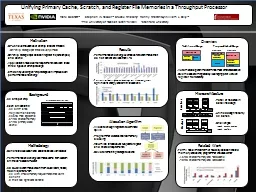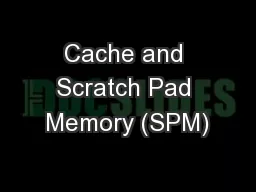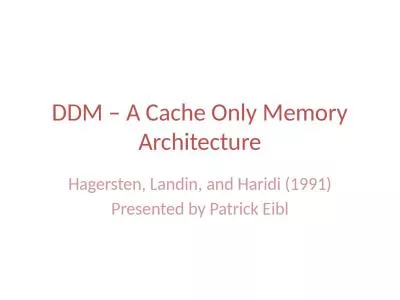PPT-Unifying Primary Cache, Scratch, and Register File Memories
Author : debby-jeon | Published Date : 2016-06-13
Mark Gebhart 12 Stephen W Keckler 12 Brucek Khailany 2 Ronny Krashinsky 2 William J Dally 23 1 The University of Texas at Austin 2 NVIDIA 3 Stanford University
Presentation Embed Code
Download Presentation
Download Presentation The PPT/PDF document "Unifying Primary Cache, Scratch, and Reg..." is the property of its rightful owner. Permission is granted to download and print the materials on this website for personal, non-commercial use only, and to display it on your personal computer provided you do not modify the materials and that you retain all copyright notices contained in the materials. By downloading content from our website, you accept the terms of this agreement.
Unifying Primary Cache, Scratch, and Register File Memories: Transcript
Download Rules Of Document
"Unifying Primary Cache, Scratch, and Register File Memories"The content belongs to its owner. You may download and print it for personal use, without modification, and keep all copyright notices. By downloading, you agree to these terms.
Related Documents














